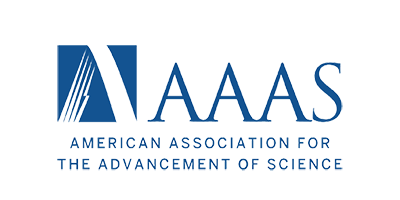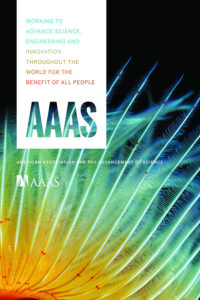The American Association for the Advancement of Science (AAAS) is an American international non-profit organization with the stated goals of promoting cooperation among scientists, defending scientific freedom, encouraging scientific responsibility, and supporting scientific education and science outreach for the betterment of all humanity. It is the world’s largest general scientific society, with over 120,000 members, and is the publisher of the well-known scientific journal Science.

AAAS MISSION
The AAAS seeks to “advance science, engineering, and innovation throughout the world for the benefit of all people.” To fulfill this mission, the AAAS Board has set the following broad goals:
- Enhance communication among scientists, engineers, and the public;
- Promote and defend the integrity of science and its use;
- Strengthen support for the science and technology enterprise;
- Provide a voice for science on societal issues;
- Promote the responsible use of science in public policy;
- Strengthen and diversify the science and technology workforce;
- Foster education in science and technology for everyone;
- Increase public engagement with science and technology; and
- Advance international cooperation in science.

“NOW AND IN THE YEARS AHEAD, WE NEED MORE THAN ANYTHING ELSE THE HONEST AND UNCOMPROMISING COMMON-SENSE OF SCIENCE. SCIENCE MEANS A METHOD OF THOUGHT… CHARACTERIZED BY OPEN-MINDEDNESS, HONESTY, PERSEVERANCE, AND, ABOVE ALL, BY AN UNFLINCHING PASSION FOR KNOWLEDGE AND TRUTH…”
President Harry S. Truman at The AAAS Annual Meeting in 1948
HISTORY OF AAAS
The formation of AAAS in 1848 marked the emergence of a national scientific community in the United States. While science was part of the American scene from the nation’s early days, its practitioners remained few in number and scattered geographically and among disciplines. AAAS was the first permanent organization formed to promote the development of science and engineering at the national level and to represent the interests of all its disciplines.
Participants in AAAS meetings, held in cities across the country, represented a who’s who of science. The meetings were covered widely by newspapers, which sometimes reprinted their proceedings verbatim.
However, AAAS’s permanence was not preordained and, despite the many contributions it made during its first 50 years, the Association came close to extinction more than once. Ultimately, an alliance with Science magazine, which had failed as a private venture, rejuvenated both the magazine and AAAS.
See More: https://www.science.org

